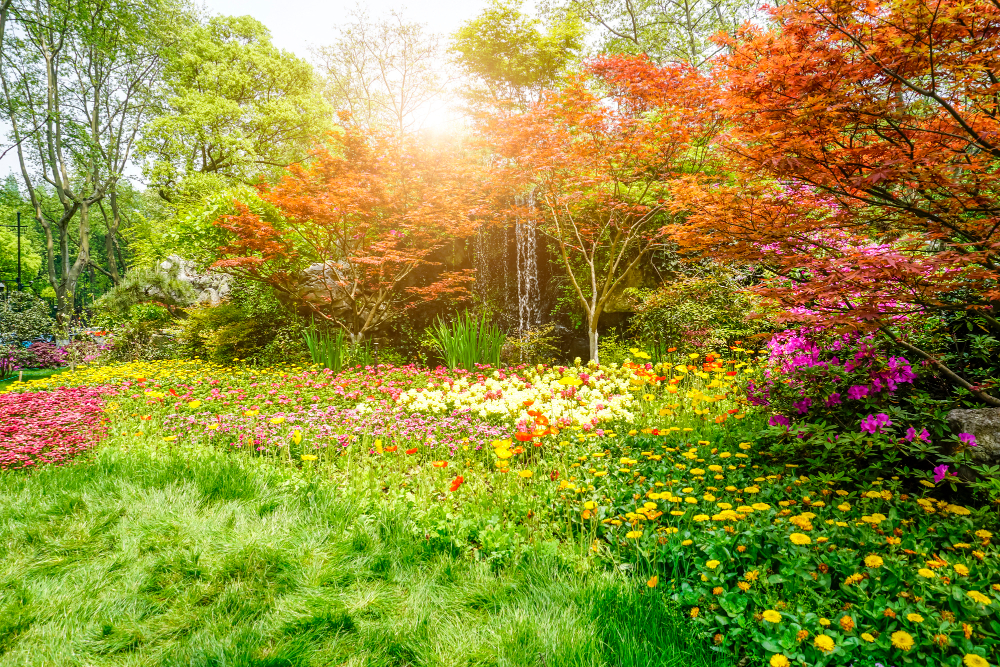Introduction
Nature offers a plethora of beautiful and intriguing plants, but not all of them are safe to touch or consume. Some plants can cause mild irritation, while others can lead to severe illness or even death. As you explore the great outdoors, it’s essential to know how to recognize and avoid poisonous plants. This field guide will help you identify some of the most common dangerous plants and provide tips on staying safe during your outdoor adventures.
1. Poison Hemlock (Conium maculatum)
Resembling a wild carrot or an unusually large parsley plant, poison hemlock is characterized by umbrella-like clusters of tiny white flowers and distinctive leaves. Look for purple blotches on the stem, ridged fruit, and a height of 3 to 7 feet. Poison hemlock can be toxic to humans and livestock when ingested, and its oils can cause sickness if absorbed through the skin [source](https://www.webmd.com/skin-problems-and-treatments/ss/slideshow-poison-plants-guide).
2. Oleander (Nerium oleander)
This tall shrub features long, leathery leaves that grow in groups of three and bright clusters of flowers in red, pink, or white. All parts of the oleander plant are highly poisonous, with just one leaf being enough to kill an adult. Ingestion can lead to severe stomach pain, diarrhea, vomiting, dilated pupils, dizziness, and breathing problems [source](https://www.webmd.com/skin-problems-and-treatments/ss/slideshow-poison-plants-guide).
3. Mistletoe (Phoradendron species)
Mistletoe is a parasitic plant that lives off other trees and shrubs. It has thick, easily breakable stems with numerous branches and thick, evergreen leaves. The small, white berries contain a sticky, poisonous pulp that can cause diarrhea and slow or stop your heart. Keep this common Christmas holiday tradition away from children and pets [source](https://www.webmd.com/skin-problems-and-treatments/ss/slideshow-poison-plants-guide).
4. Poison Oak (Toxicodendron diversilobum)
Poison oak resembles poison ivy but has leaves more similar to those of an oak tree. The sun-facing side of the leaf has tiny hairs and is a darker shade of green than the ground-facing side. Poison oak is more common in the western United States. Exposure to the plant’s sap (urushiol) can cause a delayed skin reaction, leading to a rash that may turn bumpy and form oozing blisters [source](https://www.webmd.com/skin-problems-and-treatments/ss/slideshow-poison-plants-guide).
5. Poison Ivy (Toxicodendron radicans)
Poison ivy is characterized by its oily sap (urushiol), which can cause an allergic reaction resulting in red, swollen, and itchy skin. It grows over most of the U.S., except Alaska and Hawaii. Each stem has three “leaflets,” and the plant can grow as a vine in the East, Midwest, and South, or as a shrub in the North and West [source](https://www.webmd.com/skin-problems-and-treatments/ss/slideshow-poison-plants-guide).
Tips for Staying Safe
– Familiarize yourself with the appearance of poisonous plants in your area.
– Avoid touching or consuming plants you cannot positively identify.
– Wear long sleeves, pants, and gloves when hiking or working in areas with known poisonous plants.
– Teach children to recognize and avoid dangerous plants.
– If you suspect contact with a poisonous plant, wash the affected area with soap and water as soon as possible.
Conclusion
Being able to recognize and avoid poisonous plants is crucial for staying safe during your outdoor adventures. By familiarizing yourself with the appearance of these dangerous flora and following safety precautions, you can enjoy nature without putting yourself or your loved ones at risk.




